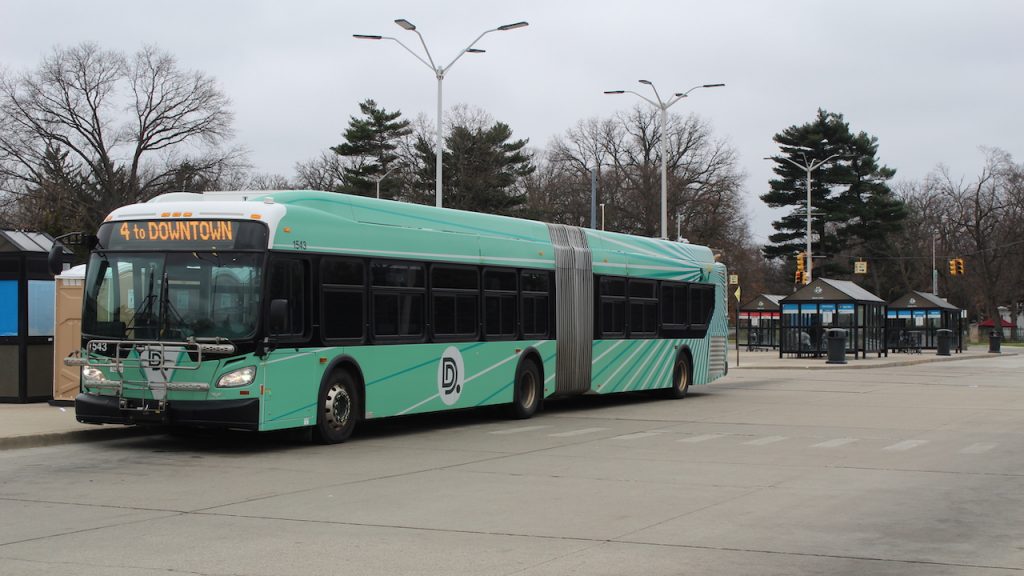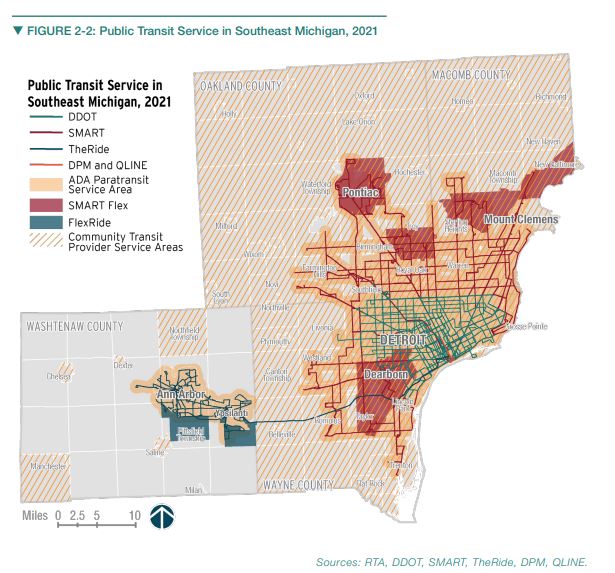The Regional Transit Authority Is Revising Its Long-term Plans for Moving People Around in Metro Detroit
The pandemic forced transit agencies to adjust services. The RTA says they need to be more flexible.

The COVID-19 pandemic battered mass transit in Metro Detroit. Public health orders mandated masks and distance rules for bus drivers and passengers. The resulting drop in ridership forced transit agencies to reduce some services and eliminate others. The Detroit Department of Transportation plans more reductions in November and the Regional Transit Authority is rewriting its master plan for moving people around in a post-pandemic world.
“We’ve built this plan with more flexibility and adaptability in mind. It allows us to be responsive to changing ridership trends.” — RTA Program Manager Ben Stupka
RTA Program Manager Ben Stupka says COVID crystalized the agency’s focus on working with local transit providers to improve service.
“We asked ‘what can we do to focus on some of the major corridors where we still have a lot of essential workers using the system?'” he says.
Related: As DDOT Cuts Service, Bus Riders and Drivers Worry About the Coming Winter
Stupka says the world of mobility has changed drastically since the RTA adopted its 20-year master plan in 2016 — and not just because of the pandemic.
“This is an opportunity for us to look at what new services and technologies are out there,” he says. “How are different types of on-demand services being used? Did we have things right in 2016? Are there new things that we can now inject into the plan?”
Stupka says there was nothing inherently wrong with the old master plan. So why change now?
“We’ve built this plan with more flexibility and adaptability in mind,” he says. “It allows us to be responsive to changing ridership trends.”
For example, Stupka says the Suburban Mobility Authority for Regional Transportation has enacted some on-demand service zones with a company called Via Transportation.
“People can hail a ride, get to the major corridors also get trips within a zone around their homes,” Stupka says. “So we think there’s going to be a lot more on-demand local trips.”

The RTA spent the summer getting input from transit riders in forming its new master plan. Stupka says they interacted with more than 4,000 people.
“We did nine virtual open houses and did direct engagement with transit riders at ten different transit hubs throughout the region,” he says.
A 92-page draft of the master plan is available online. Once a final version is approved, the next step will be to build public support for new taxes to pay for regional transit in Wayne, Oakland, Macomb, and Washtenaw counties. Voters narrowly rejected an RTA millage in 2016. Much of the opposition came from Macomb County and rural areas where transit options are either limited or unavailable.
Stupka says the challenge is convincing skeptical voters to pay for something they might not use.
“We have to craft any millage around the point that investing in regional transit is good for everybody,” Stupka says. “It’s good for employers that need people to get to their jobs sustainably, it’s good for people who use medical services, and it’s good for your aging parents.”
But it may be a while before another millage appears on the ballot. Under the state law that created the RTA, the agency can only seek millages in even-numbered years. The earliest opportunity for a vote would be November 2022.
Trusted, accurate, up-to-date.
WDET strives to make our journalism accessible to everyone. As a public media institution, we maintain our journalistic integrity through independent support from readers like you. If you value WDET as your source of news, music and conversation, please make a gift today.
